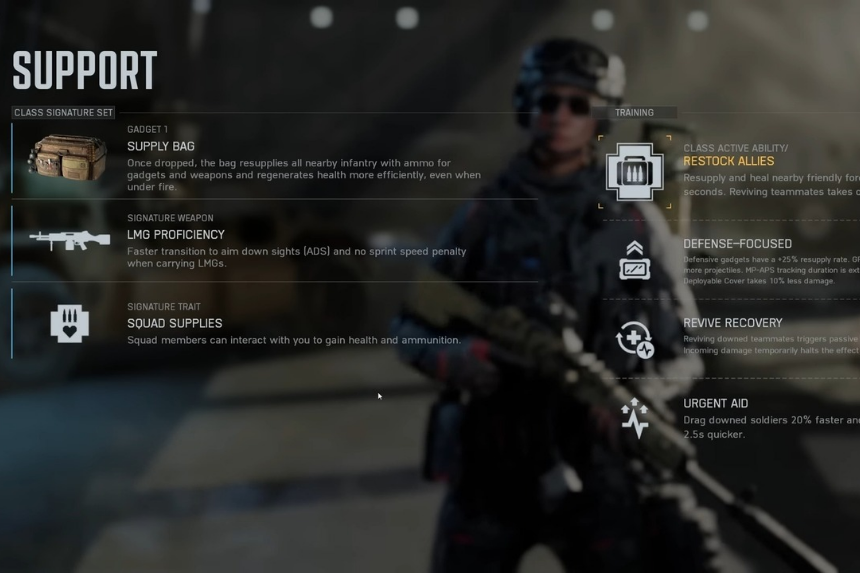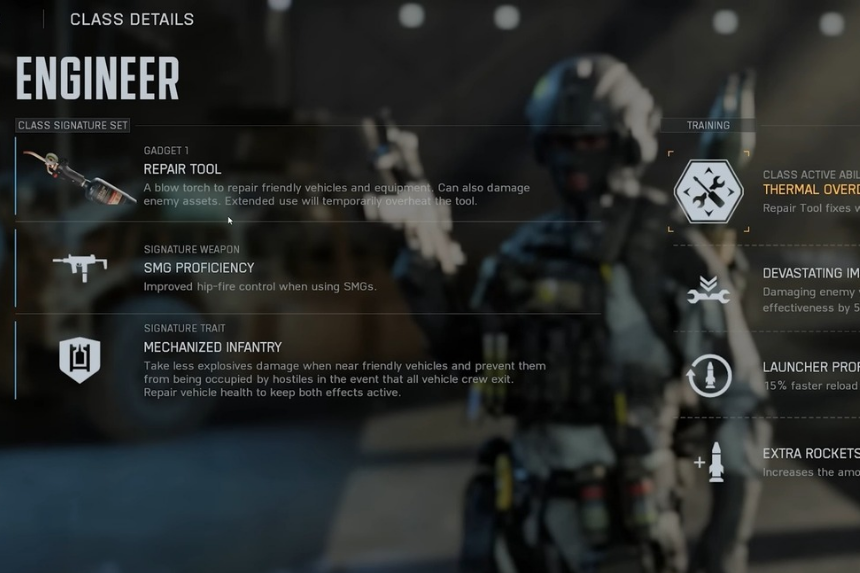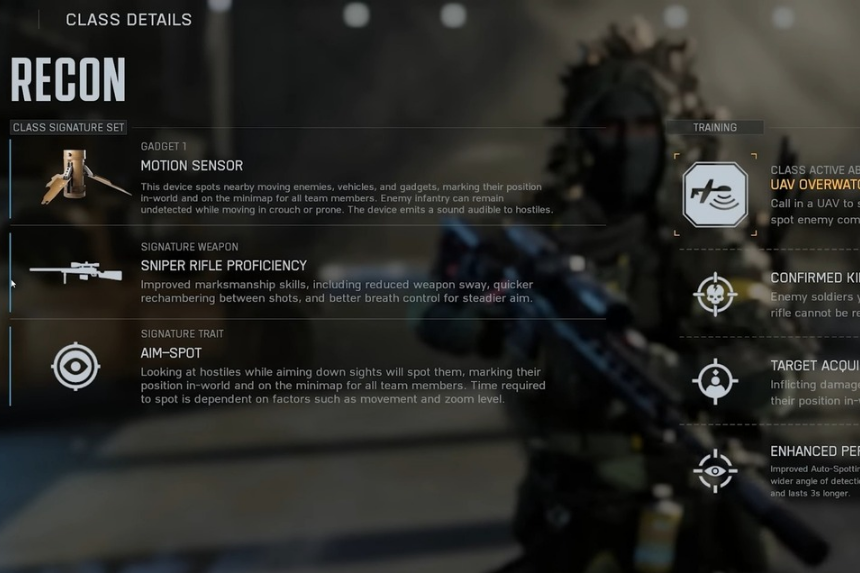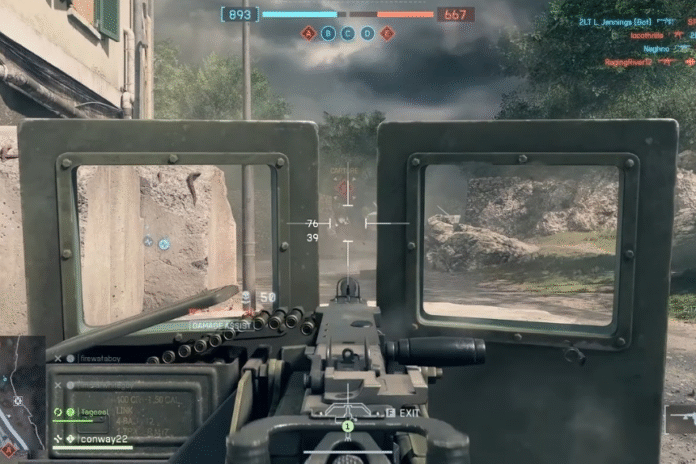Battlefield 6 not only brings a new storyline but also introduces a revised class system where winners are determined by the squad’s tactical cooperation. The four classes—Assault, Support, Engineer, and Recon—have unique talents, tools, and weapon options that help them to characterize their position in the combat area. It doesn’t matter if you are the one attacking, mending machinery, bringing back comrades, or spying on the opponent. Knowing each class’s advantages and perfect gear will not only help you to win every battle but also to get you the ultimate victory.
Quick Class Overview
| Class | What They Do | Ideal Role |
| Assault | Lead the charge, push objectives | Close to mid-range combat |
| Support | Heal, revive, and supply teammates | Squad sustainability |
| Engineer | Repair vehicles, destroy enemy assets | Vehicle control, demolition |
| Recon | Stealth, spotting, and sniping | Long range and intel gathering |
Note: You can experiment with loadouts and switch classes mid-match. On massive maps, every role shines, but in smaller infantry-only modes, some, like Engineer, become less effective.
Assault Class

Assaults are the team’s spearhead. They excel at taking objectives and engaging enemies head-on.
Assault Loadout and Playstyle
The Assault class in Battlefield 6 features an assault rifle that permits the player a quite speedy transition from sprinting to firing and is designed for quick-paced front-line combat. Its traits help squads capture objectives quicker and can reduce lockout time easily. Meanwhile the Adrenaline Injector gadget allows for greater movement speed and provides resistance to flash, stun, and explosive damage.
The active skill shows nearby enemies that are making noise and kills renew the skill. You will either have the option of two training progressions: Breacher gives you extra grenades, faster launcher reloads, and better resistance to flashes (when playing with explode focus), while Frontliner gives you health regeneration, adds an extra Adrenaline Injector charge, and shooting penalties for moving, which functions better with sustained engagements.
There are also deployable ladders for height and the Deploy Beacon for temporary respawn areas. Weapons used are the NVO-228E which is excellent for fast engagement, and the M4A1 carbine which excels in mid-range.
Support Class

Support players are the backbone of a team, keeping squads alive and stocked with essentials.
Support Loadout and Playstyle
The Support players serve as the lifeline of the squad. They’re the ones who utilize light machine guns which allows them to move freely without the sprint status effect, and the support trait gives them the ability to revive teammates more quickly in comparison to other players. The Support player’s Supply Bag gadget heals nearby allies and restocks their ammo supply, while the active ability extends the supply radius and increases the speed of their revives.
For training purposes though, players can select Combat Medic which allows them to heal while reviving teammates, or Fire Support, which improves accuracy and ammo distribution for you and your teammates.
Additional tools available in this class include a defibrillator for fast revives which also helps in deploying cover to aid teammates. Weapon options range from the L110 LMG for effective stable sustained fire to the SGX SMG, and M4A1, both of which allow you to be more mobile during revives.
Engineer Class

The Engineers support friendly tanks and destroy enemy vehicles, making them indispensable for holding objectives or pushing through defenses.
Engineer Loadout and Playstyle
Engineers primarily focus on vehicle support and destructive capabilities. They use SMGs with more stable hip-fire performance and have a trait that reduces explosive damage taken. The Repair Tool has the ability to repair vehicles or damage enemy vehicles/objects. When active, it increases repair speed as well.
Players can choose between two training paths: Anti-Armor, which focuses on extra rocket damage, faster launcher reloads, and taking out enemy vehicles, or Combat Engineer, which provides vehicle auto-heal, extended repair tool usage, and the ability to detect nearby mines.
Extra weapons, such as rockets, supply crates and mines, provide a tactical advantage here. One option for weapons is the SGX SMG, an SMG that is powerful with a high fire rate and low recoil. The NVO-228E assault rifle too is an excellent choice in open-weapon mode for mid-ranged engagements.
Recon Class

Recon players excel at gathering information and eliminating targets from a distance. Their tools let them spot enemies, provide intel, or quietly flank the opposition.
Recon Loadout and Playstyle
For Recon players, they excel at long-range engagement and gathering battlefield intel. They use sniper rifles with faster rechambering and steadier aim, combined with a trait that automatically spots enemies while scoped. Their Motion Sensor gadget tracks enemy movements, and the active ability allows them to call in a UAV for passive spotting of foes nearby.
Different training paths are available, such as Sniper which concentrates on shooting with long-range accuracy, getting enemy spotting done in a faster manner, and healing and reviving enemies on headshots, and Spec Ops, which draws attention to stealthy assassinations, improved lying down and standing mobility, and detection of enemy gadgets.
Moreover, conspicuous tools consist of recon drones, C-4, and other intelligence-gathering devices. Suggested firearms include the M2010 ESR for exclusive sniper play, or the M39 EMR and SVK-8.6 for those inclined towards DMR-style skirmishes.
Conclusion
In Battlefield 6, each class is built to complement different playstyles in the game. Doesn’t matter if you’re rushing objectives, keeping your team alive, dismantling enemy vehicles, or taking out targets from afar, mastering your class’s strengths and then combining them with the right gadgets and weapons will give you a serious advantage on the battlefield. Keep experimenting with training paths and loadouts until you find your perfect fit!

